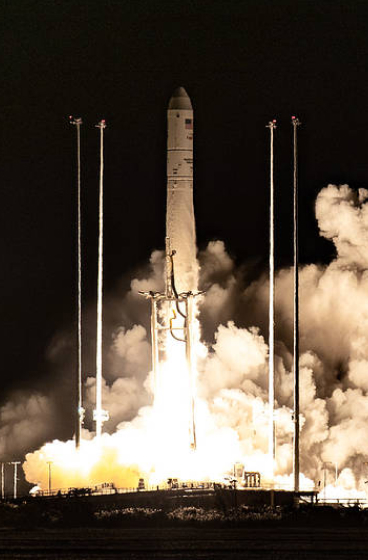Management and Regulation Ensure Effective Spectrum Sharing
- NASA’s spectrum professionals work to ensure effective spectrum sharing by collaborating with other users and regulators to define spectrum requirements and coordinate use.
- The team identifies, resolves, and reports harmful RF interference to protect NASA’s scientific missions and ensure the integrity of valuable data.
- NASA’s spectrum analysts perform analyses and simulations to support spectrum planning and management activities, including advocating for regulatory protections that promote collaborative spectrum use.
- The agency works with international regulators to report sources of interference and advocate for regulatory protections that help ensure the safety of human spaceflight activities.
- NASA’s technical expertise informs domestic and international regulators as they develop new or revised regulations, promoting collaborative spectrum use and enabling innovation and exploration in space.
4 min read
Preparations for Next Moonwalk Simulations Underway (and Underwater)
Spectrum is a shared resource. Since the discovery of radio waves and the invention of the telegraph, humanity has exponentially increased its use of the radio frequency (RF) spectrum. Consider how many wireless devices are around you right now. You’re probably reading this on a smartphone or laptop connected to the internet through Wi-Fi or 5G. You might be listening to music on Bluetooth headphones. If you are in a car or bus, the driver may be using signals from GPS satellites. To meet this increasing need, RF engineers and regulators continue to develop ways to enable users to share the same frequencies at the same time in the same place — think of modern cell phone technology. Avoiding or lessening interference between users requires regulators and users alike to maintain and enforce the ‘rules of the road’ that describe who can use which frequencies where, when, and how. NASA, like all other users, must comply with these regulations and collaborate with other users to ensure our use of the RF spectrum can continue and evolve.
Supporting and Protecting NASA’s Spectrum Users
NASA’s spectrum professionals work with users early in the project planning phase to understand the type, location, and duration of their data, and in turn determine what kind of antennas, transmitters, and receivers will be required. With that information, a spectrum manager helps to define the spectrum requirements, such as bandwidths, modulation, and other technical characteristics of the radio signals to be used. Understanding a project’s objectives helps define the appropriate service allocation and potential frequency ranges.
Once these spectrum requirements are determined, NASA’s spectrum professionals work with other relevant spectrum users within and beyond NASA to coordinate the use of the spectrum.
In the unfortunate event of harmful RF interference, working to identify, resolve, and report the interference is another critical function of NASA’s spectrum professionals. For example as Jeff Hayes — NASA’s current SCaN (Space Communications and Navigation) Program liaison to the Science Mission Directorate and the former program executive for operating missions in the Heliophysics and Astrophysics Divisions — recounts, “The NICER (Neutron Star Interior Composition Explorer) observatory did actually experience bouts of RF interference over certain parts of the world. As NICER uses GPS to understand where it is pointing to in the sky, interference can make the location information of the source imprecise, and that impacts the quality of the data collected. That data could potentially be attributed to the wrong star.”
When NASA identifies interference to a mission like NICER or to a device at an agency center or facility, NASA center and facility spectrum managers work to identify, resolve, and report the interference.
Identifying and reporting sources of interference helps to raise awareness of the impacts and causes of interference. When the sources of interference are international, which is especially common for space systems like NICER, SCaN’s spectrum management team works with U.S. regulators to report the incident to international regulators. These interference reports can be used to advocate for regulatory protections that help ensure the integrity of valuable science data and the safety of human spaceflight activities.
Advocating for NASA’s Current and Future Spectrum Use
NASA’s spectrum analysts and engineers perform analyses and simulations to support spectrum planning and management activities. For example, passive remote sensing instruments like the radiometer on the Soil Moisture Active Passive mission detect natural energy (radiation) emitted or reflected by an object or scene being observed. This energy is much fainter than human-generated radio signals and require highly sensitive radiometers that are susceptible to interference from more powerful signals. The spectrum management team works to ensure regulatory protections are in place and followed to ensure the integrity of NASA’s scientific missions.
Sometimes NASA’s future missions envision new ways and places to use radio waves. For example, when NASA’s Artemis campaign began taking steps to return humans to the Moon, SCaN’s spectrum professionals began working with other stakeholders to develop a RF architecture that enables the use of radio waves for science data, communications, positioning, navigation, and timing while also limiting the risk of interference with systems on or orbiting Earth. NASA’s spectrum professionals further the agency’s spectrum management goals and objectives by analyzing potential changes in international or domestic regulations and proposing technical solutions that promote collaborative spectrum use with both foreign and domestic partners.
NASA’s technical expertise is critical to ensuring domestic and international regulators are well informed as they develop new or revised regulations that effectively enable the exciting innovation and exploration central to NASA’s mission.





